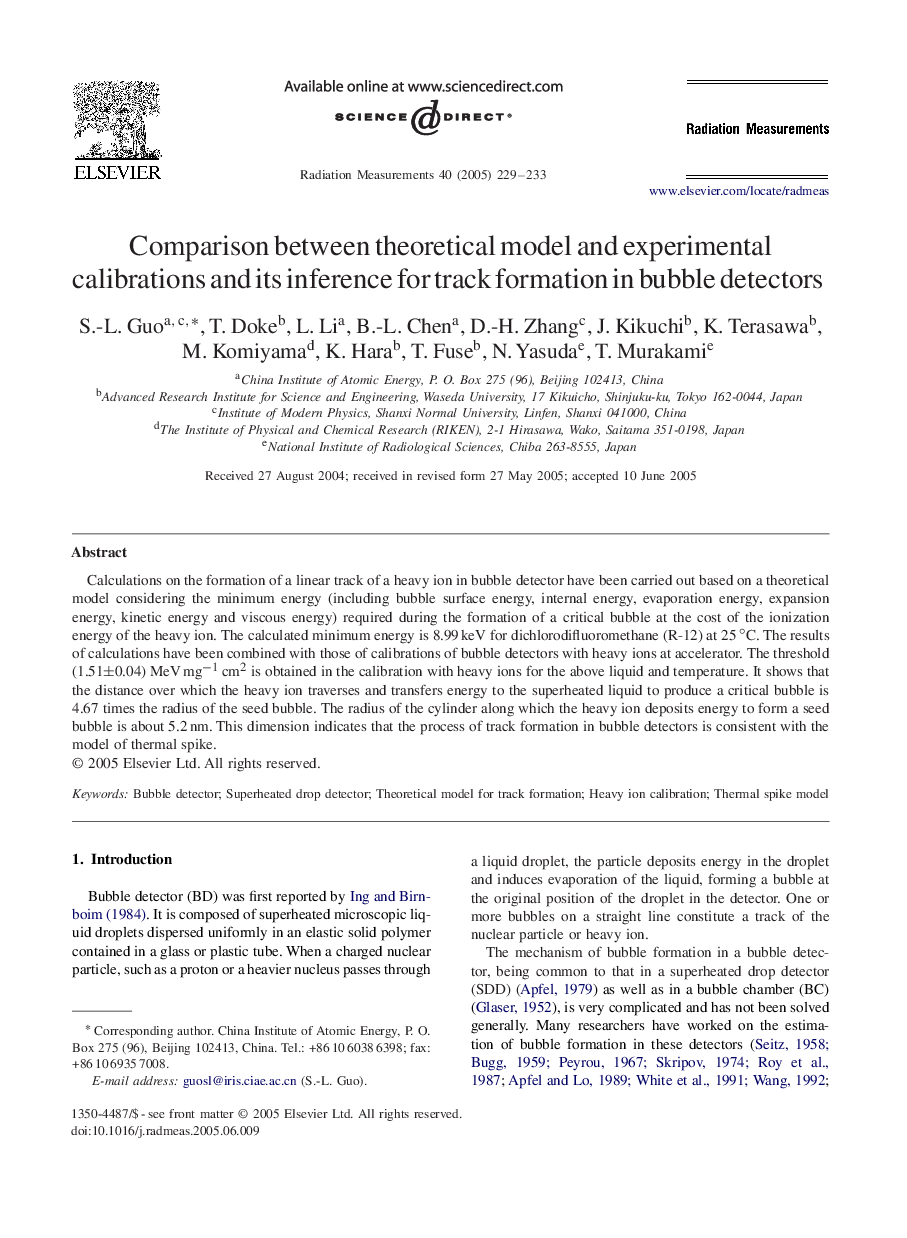| Article ID | Journal | Published Year | Pages | File Type |
|---|---|---|---|---|
| 9875897 | Radiation Measurements | 2005 | 5 Pages |
Abstract
Calculations on the formation of a linear track of a heavy ion in bubble detector have been carried out based on a theoretical model considering the minimum energy (including bubble surface energy, internal energy, evaporation energy, expansion energy, kinetic energy and viscous energy) required during the formation of a critical bubble at the cost of the ionization energy of the heavy ion. The calculated minimum energy is 8.99 keV for dichlorodifluoromethane (R-12) at 25 °C. The results of calculations have been combined with those of calibrations of bubble detectors with heavy ions at accelerator. The threshold (1.51±0.04) MeV mg-1 cm2 is obtained in the calibration with heavy ions for the above liquid and temperature. It shows that the distance over which the heavy ion traverses and transfers energy to the superheated liquid to produce a critical bubble is 4.67 times the radius of the seed bubble. The radius of the cylinder along which the heavy ion deposits energy to form a seed bubble is about 5.2 nm. This dimension indicates that the process of track formation in bubble detectors is consistent with the model of thermal spike.
Related Topics
Physical Sciences and Engineering
Physics and Astronomy
Radiation
Authors
S.-L. Guo, T. Doke, L. Li, B.-L. Chen, D.-H. Zhang, J. Kikuchi, K. Terasawa, M. Komiyama, K. Hara, T. Fuse, N. Yasuda, T. Murakami,
